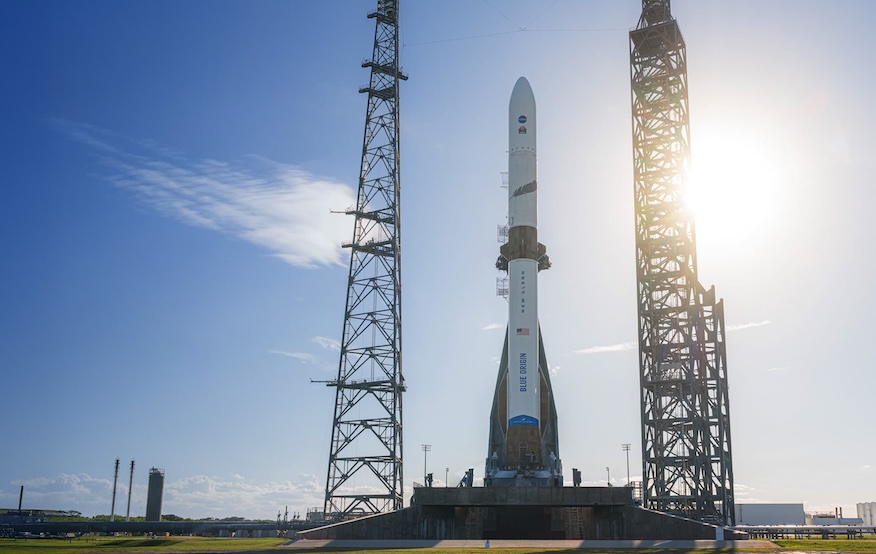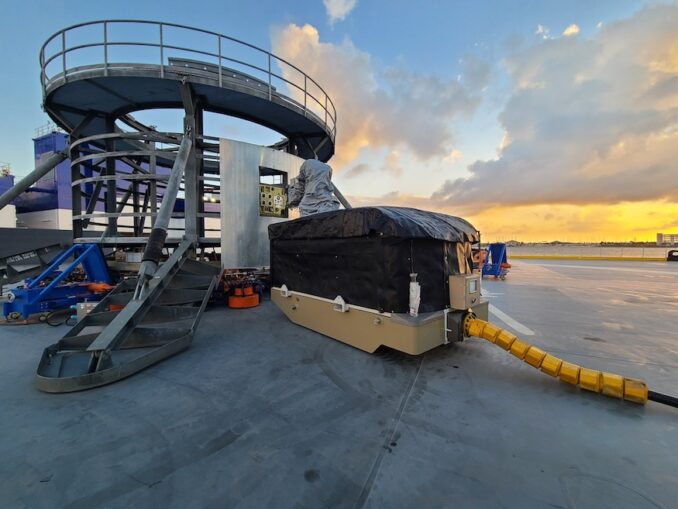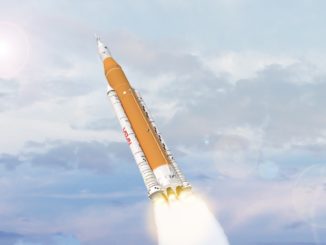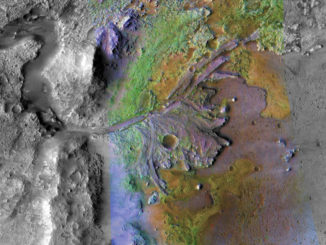
Blue Origin is stepping back up to the plate and will take another crack at launching its 98-meter-tall (321 ft) rocket from Cape Canaveral Space Force Station on Thursday, Nov. 13.
A confluence of poor weather, an errant cruise ship in the keep out zone and a ground systems issue at the pad were roadblocks to a Sunday launch attempt. Its second attempt on Wednesday was halted because a trio of coronal mass ejections from the Sun created too high of a probability for strong geomagnetic storms.
The company founded by Amazon founder Jeff Bezos is now targeting liftoff from Launch Complex 36 during an 88-minute window that opens at 2:57 p.m. EST (1957 UTC).
Spaceflight Now will have live coverage beginning about three hours prior to liftoff.
The 45th Weather Squadron forecast a greater than 95 percent chance of liftoff during the window, citing no concerns for meteorological impacts that would prevent launch. Teams were also watching for the lingering effects of the geomagnetic storms, placing them as a “moderate” risk to launch on Thursday.
On Tuesday afternoon, NOAA’s Space Weather Prediction Center forecast a G4 Severe Watch connected to a coronal mass ejection first detected on Sunday, Nov. 9. It noted that this is just the fourth G4 Watch issued this solar cycle, making it “very rare,” and added that impacts are expected “about midday on Nov. 12.”
“A CME is anticipated to arrive at and partially impact Earth around midday, 12 Nov; with the potential for elevated geomagnetic response and dependent upon the orientation of the embedded magnetic field, potential exists for Severe Storm levels.”
In its latest update on Thursday morning, NOAA issued an extended warning for “Proton 10MeV Integral Flux above 10pfu.” This type of so-called Solar Proton Event or SPE for short can be harmful to spacecraft electronics.
Roughly three minutes after liftoff, Blue Origin will attempt to propel the first stage booster, named ‘Never Tell Me the Odds’, towards a landing on its barge, ‘Jacklyn’, which is staged about 375 miles (603.5 km) downrange of the launch pad.
The company attempted a similar landing with its first New Glenn booster, ‘So You’re Telling Me There’s a Chance’, but it failed to properly relight the three gimbaling BE-4 engines for the reentry burn.
If all goes well, Blue Origin will become the second private company to perform a propulsive landing an orbital class rocket. It plans to reuse its boosters for up to 25 flights initially, assuming successful landings.

What’s onboard?
Nestled within the New Glenn’s 7 m (23 ft) payload fairings are the twin spacecraft that makeup NASA’s Escape and Plasma Acceleration and Dynamics Explorers (ESCAPADE) mission as well as a ride share communications technology demonstration from Viasat.
A little more than 33 minutes after liftoff, the two ESCAPADE satellites, Blue and Gold will deploy from a satellite adaptor called an Evolved Expendable Launch Vehicle (ESPA) ring. Blue separates first and then Gold about 30 seconds later.
They are being released into a highly elliptical orbit, “just shy of Earth escape velocity,” Blue Origin CEO Dave Limp said in a social media post on Nov. 9. The twins will loiter in a novel so-called “kidney bean” shaped orbit around Lagrange Point 2 about a million miles from Earth for about a year.
They will then use the Earth for a gravity assist around fall 2026 to begin a roughly 11-month journey to the Red Planet. They will arrive at Mars roughly two days apart when they will each perform a Mars insertion burn to enter into an elliptical orbit that will slowly be lowered into their target science orbit.
They will be studying Mars’ magnetosphere to learn more about how it’s been influenced by space weather over time.

The other payload onboard New Glenn from Viasat will remain fixed to the upper stage and be activated about five minutes after the deployment of the second ESCAPADE spacecraft. This is a demonstration of Viasat’s InRange launch telemetry relay solution, which is part of the company’s work under the NASA Communications Services Project.
“InRange is a specific launch telemetry data relay service designed to support launch providers with responsive, real-time data transmission during launch using Viasat’s L-band network,” a Viasat spokesperson told Spaceflight Now in a statement.
“This is a separate solution from Viasat’s high-capacity Ka-band data relay capability (i.e. Real-Time Space Relay), which is also being developed and will separately be demonstrated as part of our NASA CSP program work.”




Hope launch is successful and future missions to moon and mars will be human led, i believe human mission to james webb telescope about a million miles from earth would be a good stepping stone mission for astronauts before long mission to mars.
Exciting
I am in Orlando
My son works for Blue Origin.
So very proud of him and the entire Blue Origin team
Paul & Arlene in Cocoa Beach
Watching from Edmonton Alberta
They are just jinxed…very much prayers 🙏 for them to get a successful launch and mission
Watching from Stoke on Trent Staffordshire England.
Greatest
Great article.